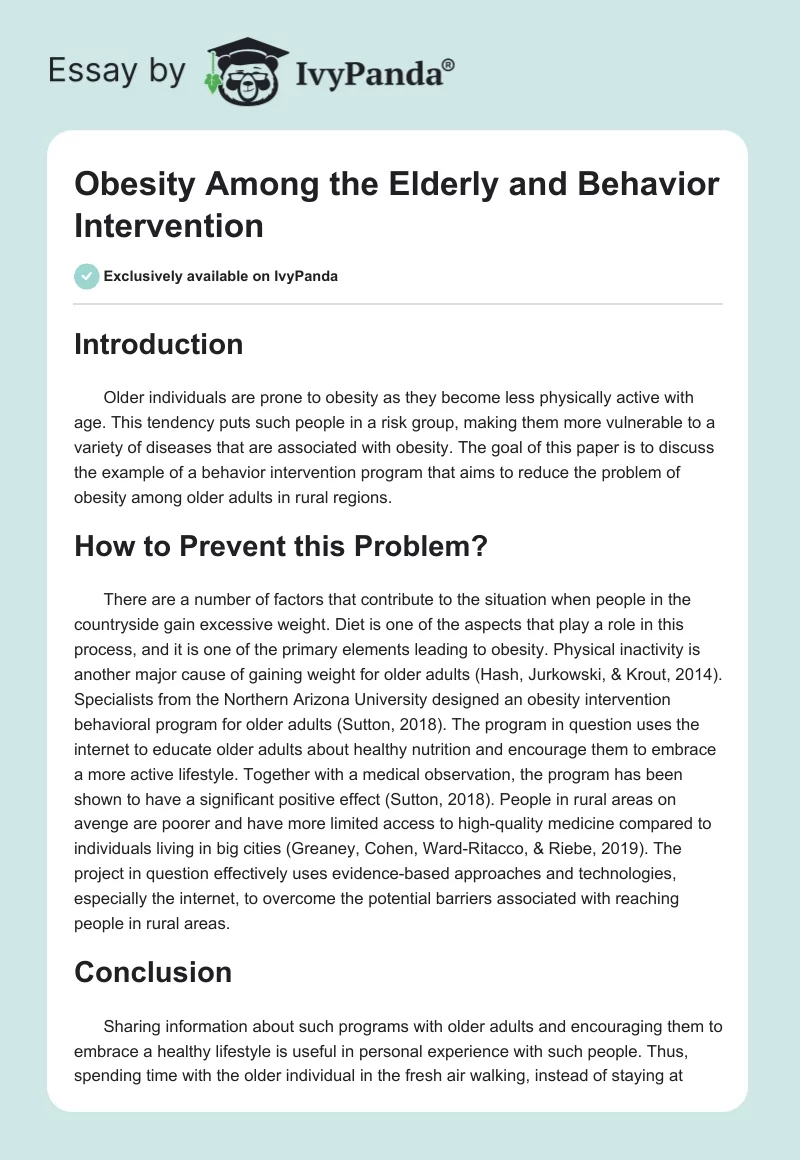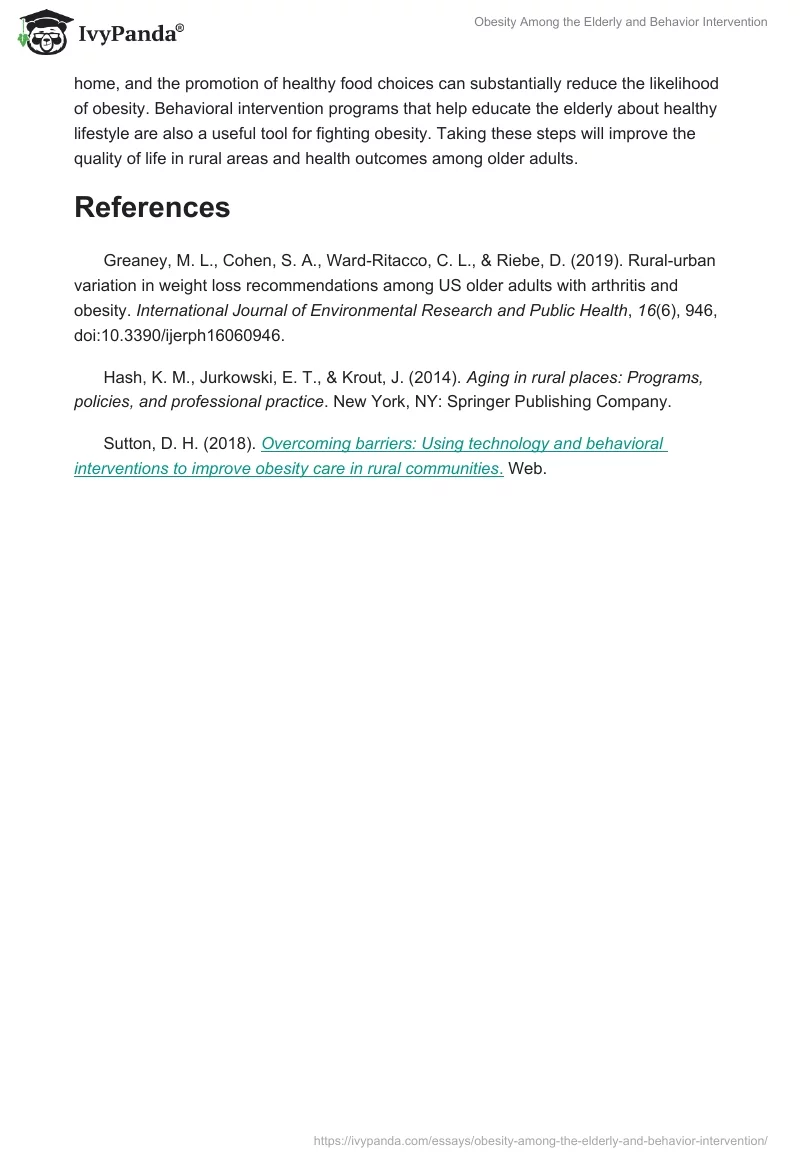Introduction
Older individuals are prone to obesity as they become less physically active with age. This tendency puts such people in a risk group, making them more vulnerable to a variety of diseases that are associated with obesity. The goal of this paper is to discuss the example of a behavior intervention program that aims to reduce the problem of obesity among older adults in rural regions.
How to Prevent this Problem?
There are a number of factors that contribute to the situation when people in the countryside gain excessive weight. Diet is one of the aspects that play a role in this process, and it is one of the primary elements leading to obesity. Physical inactivity is another major cause of gaining weight for older adults (Hash, Jurkowski, & Krout, 2014). Specialists from the Northern Arizona University designed an obesity intervention behavioral program for older adults (Sutton, 2018). The program in question uses the internet to educate older adults about healthy nutrition and encourage them to embrace a more active lifestyle. Together with a medical observation, the program has been shown to have a significant positive effect (Sutton, 2018). People in rural areas on avenge are poorer and have more limited access to high-quality medicine compared to individuals living in big cities (Greaney, Cohen, Ward-Ritacco, & Riebe, 2019). The project in question effectively uses evidence-based approaches and technologies, especially the internet, to overcome the potential barriers associated with reaching people in rural areas.
Conclusion
Sharing information about such programs with older adults and encouraging them to embrace a healthy lifestyle is useful in personal experience with such people. Thus, spending time with the older individual in the fresh air walking, instead of staying at home, and the promotion of healthy food choices can substantially reduce the likelihood of obesity. Behavioral intervention programs that help educate the elderly about healthy lifestyle are also a useful tool for fighting obesity. Taking these steps will improve the quality of life in rural areas and health outcomes among older adults.
References
Greaney, M. L., Cohen, S. A., Ward-Ritacco, C. L., & Riebe, D. (2019). Rural-urban variation in weight loss recommendations among US older adults with arthritis and obesity. International Journal of Environmental Research and Public Health, 16(6), 946, doi:10.3390/ijerph16060946.
Hash, K. M., Jurkowski, E. T., & Krout, J. (2014). Aging in rural places: Programs, policies, and professional practice. New York, NY: Springer Publishing Company.
Sutton, D. H. (2018). Overcoming barriers: Using technology and behavioral interventions to improve obesity care in rural communities. Web.


